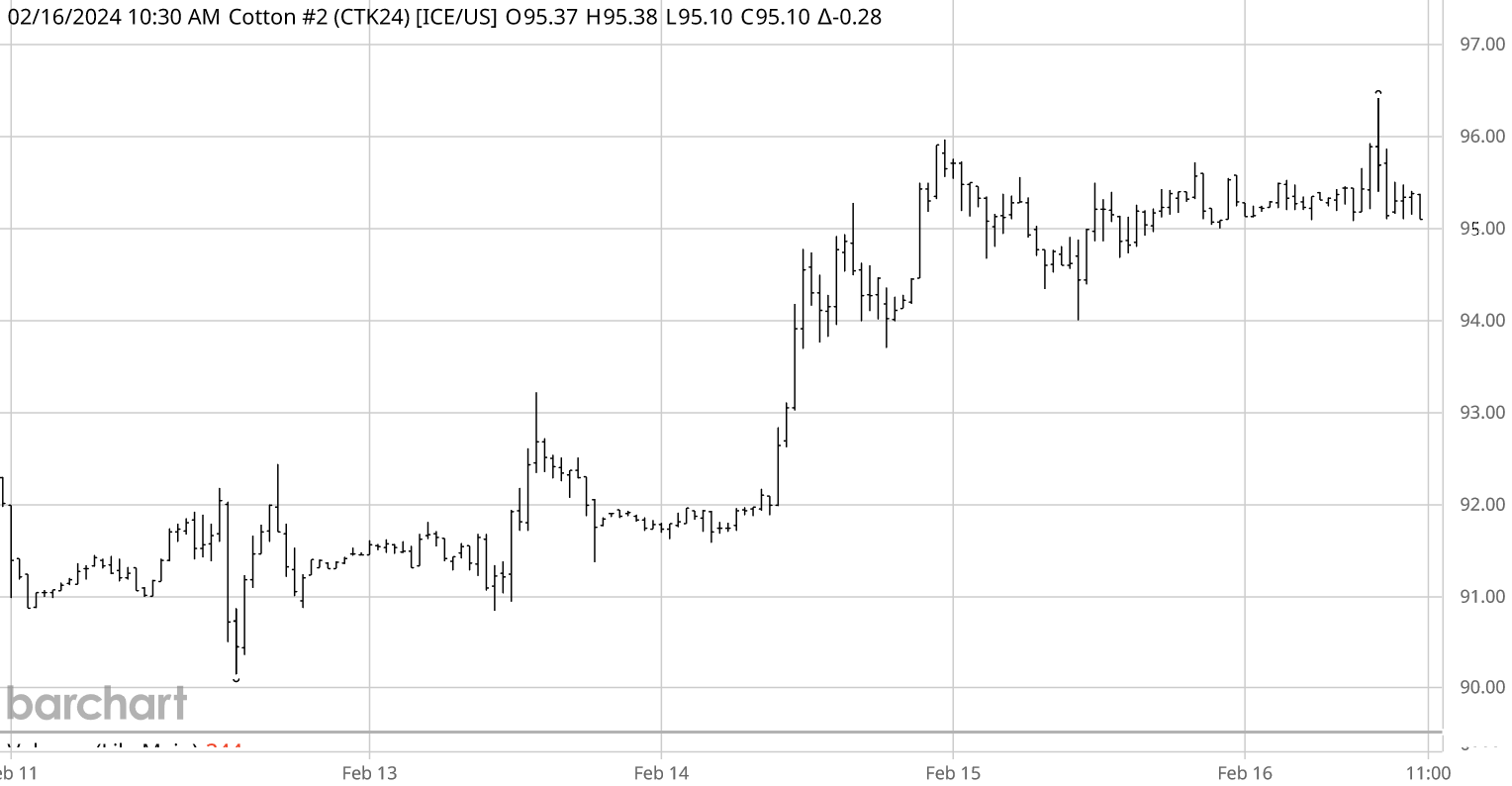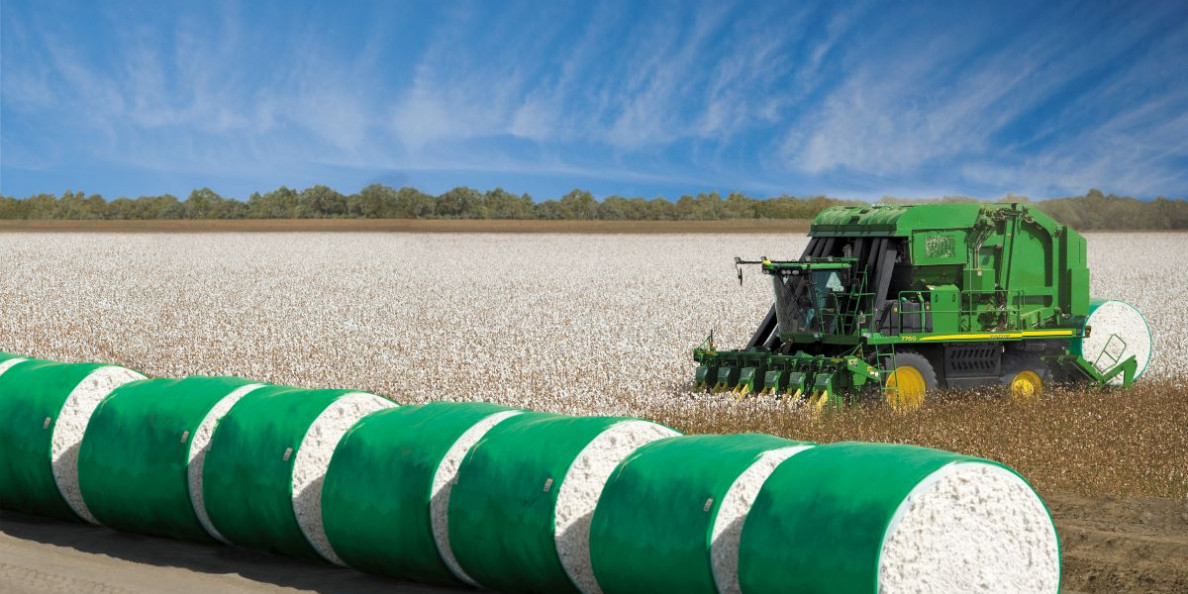ICE cotton futures continued to rally for the week ending February 16 (see chart above courtesy of Barchart.com). The most active May’24 contract settled Friday at 94.42 cents per pound, while the new crop Dec’24 settled the week at 84.08. Chinese cotton prices were on holiday this week, while the A-Index of world prices rose across the week.
In other ag futures markets, old crop CBOT corn, CBOT soybeans, and KC wheat all trended lower this week. The U.S. dollar index shifted up strongly on Tuesday in apparent reaction to unexpectedly strong inflation indiators. Other macro influences (i.e., GDP, inflation, and interest rate policy) have shown signs of recent improvement.

Cotton-specific influences included a modestly bullish 2024 outlook numbers from USDA’s Outlook Forum (bullish in the sense that projected new crop exports balance out a large crop). The routine weekly fundamentals remained demand focused this week, with weaker U.S. export sales (as of February 8) in keeping with the expected demand response to recently rising prices. Actual export shipments were near the level needed weekly average pace. USDA’s weekly summary of the U.S. regional markets continued to reflect mixed spot physical trading activity and moderate to good demand, across the U.S. regions. Several other standard predictors of U.S. cotton demand are mixed, e.g., falling certified stocks with historically low levels of on-call sales.
ICE cotton futures open interest rose across the week, as in previous weeks. Coupled with rising futures settlements, this continues the appearance of net long positioning. Indeed, the regular Tuesday (February 13) snapshot of speculative positioning showed a whopping 16,090 additional hedge fund longs, reinforced by 2,859 fewer (covered) hedge fund shorts, week over week. In addition the week saw a 6,470 increase in the index fund net long position. This is the second week in a row of this across-the-board bullish speculative positioning.
For more details and data on Old Crop and New Crop fundamentals, plus other near term influences, follow these links (or the drop-down menus above) to those sub-pages.
Source: TAMU

